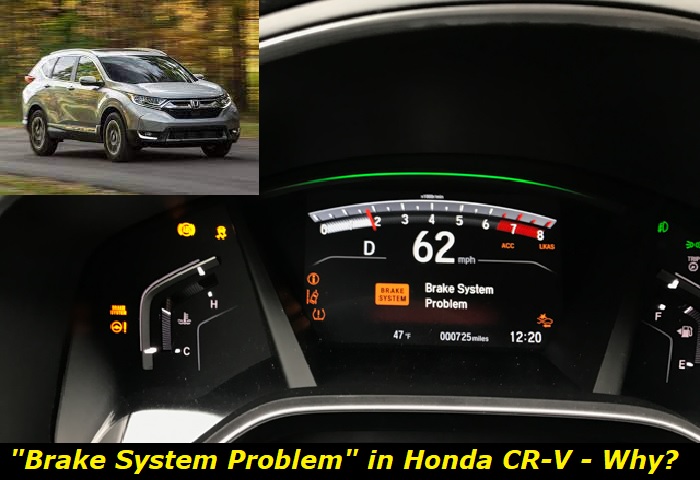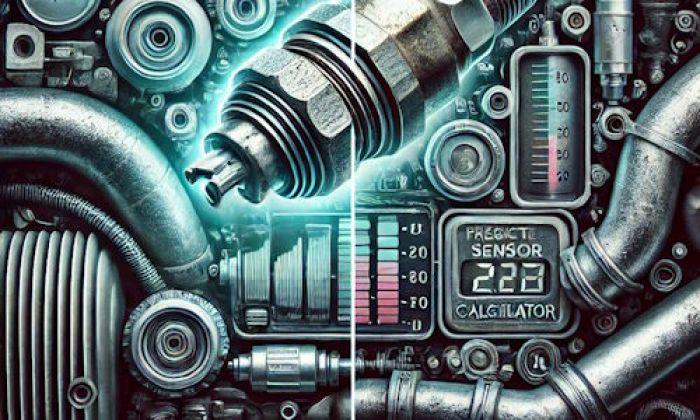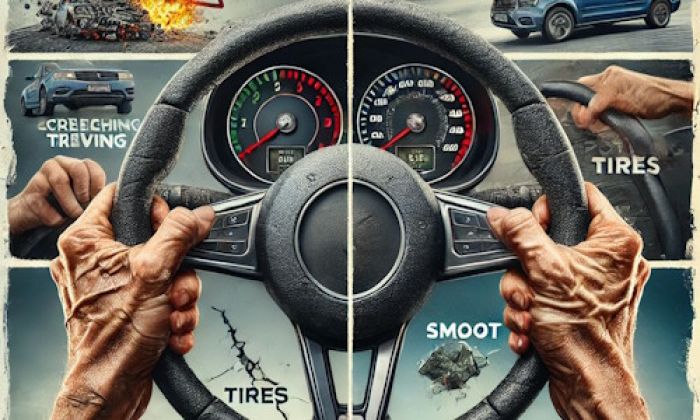People love SUVs because of their huge size and the Honda CR-V excels in this category. One of the CR-V's notable features is its incredible cargo space. However, the CR-V has some problems with the brake system.
Brake system problem message highlights
- Common reasons:brake fluid low, brake pads thin, EPB problems, bad battery
- How to fix:check the brake fluid level, check the battery, check pads, read the codes
- Possible consequences:you may lose the brakes, be careful
- Priority level:High
- Can you drive?Not recommended
- DIY repair:Possible but complicated
- Repair price range:$150-$500

What Does "Brake System Problem" Mean on The Honda CR-V?
Firstly, I want you to understand that the CR-V battery and the "brake system problem" error messages are related. If your CR-V won't start, the likely culprit is a dead battery.
Of course, there are a lot of issues that can cause a car to not start. The problem could be a bad starter motor or a faulty alternator. In some cases, the issue could even be something as basic as insufficient fuel.
However, if you get the "brake system problem" error message and your car won't start, it means that the battery is down. The CR-V batteries have a serious reliability problem. These batteries drain too fast.
A low-voltage battery is one of the major causes of brake system problems in CR-V models. Since the CR-V batteries drain so fast, they're often always the reason for braking issues.
As I said earlier, Honda has received multiple lawsuits about the CR-V battery. The class action lawsuit alleges that "the batteries are too small to power the CR-V vehicles". Also, the parasitic battery drainage poses a safety hazard because the door locks, headlights, and electrical systems fail.
What Causes Brake System Problem In The Honda CR-V?
All car parts and systems are important but the brake system is particularly important. The brake system is probably the most essential safety feature in a car. In all vehicles, the braking system's function involves decelerating and stopping motion.
A problem in the brake system could lead to fatal accidents. Therefore, any fault in the system should be taken seriously. Most modern vehicles have a brake light that alerts drivers whenever there's an issue with the system.
In the Honda CR-V, different error messages signify a brake problem. Today, we're focusing on the "brake system problem" error message and its causes.
1) Defective Brake System
If you get the "brake system problem" message on your dashboard screen, it could mean that there's a problem with your brake system. The problem in question could be worn brake pads, bad rotor discs, or overheating brake pads.
The brake system is crucial for safe driving, so you should check the car immediately if you get an error message.
2) Dead or Low-voltage Battery
Honda CR-V 2017-2020 (fifth generation) models have serious battery problems. In addition to that, a dying battery on the fifth-generation CV-R triggers many alarms.
If you get the "brake system problem" error message, it could be a cause of a low-voltage battery. Since the CR-V has battery drainage, it's common for people to associate the low battery with the brake system error message.
3) Faulty Servo Motor
In cars, servo motors control speed by sending electrical signals to the ECM. Servo motors have bearings and these bearings get worn with time. Also, like every other mechanical part that moves, the servo motor is subject to friction and overheating.
Whenever the servo motor encounters any of the above challenges, it can trigger the "brake system problem" error message.
4) Bad Electric Parking Brake
Honda's CV-R model has an electric parking brake with an automatic brake hold on the console. The electric parking brake performs the same role as the manual handbrake. Though it comes with some additional features.
When the electric parking brake is faulty, it causes the brake system light to come on. A bad electric parking brake will also cause "electric brake problem" and "brake system problem" error messages to appear on the screen.
5) Oil Leakage
The brake might seem simple but that is not the case. Several components make up the braking system and any damage can cause the car brakes to misbehave.
Most modern cars use hydraulic brake systems and in such systems, the brake fluid plays an important role. Hydraulic brake systems are more efficient and easier to maintain.
However, there's a risk of oil leakage. When the brake fluid leaks and gets too low, it can cause a loss of braking power or pressure. This issue will make the "brake system problem" error message come on the car screen.
Why Is My Honda CR-V Brake Light Always On?
The brake light is an indicator that lets you know if something is wrong with your brakes. There's a problem if your brake light is not working. On the other hand, there's also a problem if the brake light is always on.
If you notice that your brake light always stays on, you should look into the problem and fix it immediately. Here are some common issues that cause the brake light to stay on.
1) Low Hydraulic Fluid
For the brakes to operate smoothly, there has to be enough brake fluid. It's called a hydraulic system for a reason. If your brake fluid is low, the brake light will come on as a warning.
When you notice the brake light, check your brake fluid level first. If the fluid is low, top it up and check the brake light.
2) Faulty Fluid Level Sensor
The fluid level sensor usually floats in the brake fluid and it detects the level of the fluid. When the fluid gets too low, the sensor sends a signal to the car computer and the brake light comes on.
When the sensor is faulty, it misinterprets the fluid level and sends incorrect signals. If you notice this, you have to replace the sensor.
Other issues can make the brake always stay on. If you're unable to diagnose the cause, refer to a technician for professional help.
How To Diagnose a Brake System Problem?
There are several signs that point toward a faulty brake. As such, it's relatively easy to know when there's a problem with your brake system. The following are some signs that will help you diagnose brake system problems;
- While test-driving the car for diagnosis, pay attention to how the brake pedal feels. If you have to step on the pedal for a long time before the vehicle stops, it means the brake pads are worn.
- If the brake pedal feels spongy, it could mean that there's air in the hydraulic fluid. You should take the car to the mechanic for a thorough check.
- Does your brake pedal vibrate when you step on it? The problem could be either warped, rusted, or scratched rotors.
- When a car pulls on one side while braking, it means that there's a problem with the brake caliper. The problem could also be a collapsed brake hose or a worn brake pad.
How Long Do Honda CR-V Brakes Last?
The lifespan of Honda CR-V brakes depends on many factors. Normally, the brakes last for 30,000 - 70,000 miles. However, they could last for lesser miles if conditions are poor.
Some factors that affect the longevity of your brakes are the environment, driving habits, and maintenance culture. If you drive in a city with lots of traffic, you'll have to use your brakes more. Meanwhile, the reverse is the case for someone who drives on the highway.
Maintenance helps a lot, so if you service your brakes routinely, you'll likely hit the 70,000 miles mark. Of course, drivers who commute more will notice that their brake parts wear out faster.
Honda CR-V rivals like the 2018 Toyota RAV4 and the 2018 Ford Escape also have brakes that last around 30,000 - 70,000 miles.
How To Reset the Brake System on a Honda CR-V
When Honda introduced their electric parking brake, the plan was to offer advanced braking features to drivers. However, the system is not exactly flawless. The electric parking brake has been the subject of multiple lawsuits.
Earlier on in this article, I mentioned that a bad electric brake could trigger the "brake system problem" error message. Honda's electric parking brake has a setting that automatically engaged the brake when the vehicle is off.
The automatic feature is very convenient but it malfunctions a lot. Some drivers have mentioned that their parking brakes were engaged while they were on the road. That's a huge safety risk but the good thing about the parking brake is that you can reset it.
You can follow the simple steps below to reset your CR-V brake system:
- Stop the car completely and place both the brake pedal and gear shift in a neutral position.
- Turn off the car ignition, then press down on the electric parking brake switch. Hold down the switch for about three seconds.
- After doing this, the electric parking brake will reset to its original settings.
About the authors
The CarAraC research team is composed of seasoned auto mechanics and automotive industry professionals, including individuals with advanced degrees and certifications in their field. Our team members boast prestigious credentials, reflecting their extensive knowledge and skills. These qualifications include: IMI: Institute of the Motor Industry, ASE-Certified Master Automobile Technicians; Coventry University, Graduate of MA in Automotive Journalism; Politecnico di Torino, Italy, MS Automotive Engineering; Ss. Cyril and Methodius University in Skopje, Mechanical University in Skopje; TOC Automotive College; DHA Suffa University, Department of Mechanical Engineering






Add comment